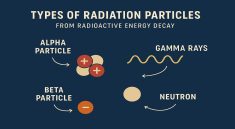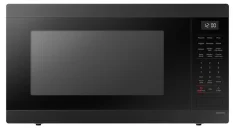ABGX – Radiation sounds scary. Yet it’s around us every day. From sunlight to smartphones, radiation comes in many harmless forms. Surprisingly, even bananas contain small amounts of it. Meanwhile, X-rays use radiation for medical scans. Although they seem very different, bananas and X-rays share one thing: both involve natural exposure to radiation. Understanding this can help reduce fear and promote smarter decisions.
Radiation Comes in Many Forms
First, it’s important to know that radiation isn’t always dangerous. It simply means energy traveling through space. For instance, light, heat, and radio waves are all forms of radiation. Ionizing radiation—like X-rays—can remove electrons from atoms and pose risks in large doses. On the other hand, non-ionizing radiation—like from microwaves or cellphones—is usually harmless at low levels. Knowing the difference is the first step to understanding how radiation affects us.
“Read More: Film Series Soundtracks are one way for Musicians to Become Successful”
Bananas Naturally Emit Radiation
Believe it or not, bananas contain potassium-40, a naturally radioactive isotope. Because potassium is essential for the body, we eat it regularly. In small amounts, this natural radiation poses no threat. In fact, scientists even created the “banana equivalent dose” to explain radiation exposure in relatable terms. For example, one dental X-ray equals roughly 50 bananas in terms of radiation. That comparison helps people understand scale without panic.
X-Rays Use Radiation for Good
Medical imaging often relies on radiation. X-rays help doctors see broken bones, detect infections, and find tumors. Although they involve higher doses than what we get from food, medical professionals limit exposure to keep patients safe. Protective shields and strict guidelines reduce any long-term risk. As a result, we benefit from life-saving diagnoses while minimizing harm. Understanding how radiation works makes these tools less intimidating.
“Read About: Medical Centers Strengthen Radiation Guidelines”
Everyday Items Also Emit Radiation
Besides bananas, many household items give off tiny levels of radiation. For instance, granite countertops contain uranium traces. Smoke detectors use a small amount of americium. Even flying in an airplane exposes you to more cosmic radiation because of the high altitude. However, all of this is considered safe under normal conditions. Radiation is part of our environment—and has been long before modern technology existed.
Awareness Helps, Panic Doesn’t
When people hear the word “radiation,” they often imagine nuclear accidents. While those events are serious, they’re rare and extreme. Most radiation we experience daily is far below harmful levels. Education plays a key role in separating fear from fact. By learning where radiation comes from and how it works, we can make informed choices without unnecessary fear. In the end, understanding offers more protection than avoidance.



